|
|
Post by Arjan Hut on Jun 7, 2020 7:30:49 GMT -5
357 A small white boxtop
See also:73 Several Jim McCammon photo(s) and negatives353 Pregnant woman who sat next to Oswald in Texas TheaterErasing the Past...DiscussionsWhen they arrive downstairs in the basement holdover room, Sims and Boyd search Oswald-remarkably, no one has yet. Boyd finds five live rounds of .38 caliber ammunition in the left front pocket of Oswald's trousers. "What are these doing in there?" the detective asks. "I just had them in my pocket," Oswald says nonchalantly. Detective Sims finds a bus transfer issued by the Dallas Transit Company in his shirt pocket. Oswald takes off his silver Marine Corps ring and hands it to Sims. Also recovered from Oswald's pockets are a small white boxtop with the name "Cox's, Fort Worth" printed on the top; a paycheck stub from American Bakeries dated August 22, 1960; a brass key marked "P.O. Dept., Do Not Dup." with the number 1126; eighty-seven cents in change; and thirteen dollars in paper money-a five-dollar bill, and eight singles. (Vincent Bugliosi, Reclaiming History, p 132-3)  One note more: One note more: On one level, it’s surely true that the investigation into the murder of JFK will never be finished—so here’s my tiny bit of local-interest JFK theory: Before seeing the play, I re-read parts of Vincent Bugliosi’s gigantic book Reclaiming History: The Assassination of President John F. Kennedy. On page 132, there is a list of the contents of Lee Harvey Oswald’s pockets. An item mentioned without comment is “a small white box top with the name ‘Cox’s Fort Worth’ printed on the top….” It stopped me cold. Cox’s, of course, once was a favorite department store in Fort Worth. I loved their high-perched balcony toy department on Berry Street and, when I was older, their cute clothes. Why, I wondered, would a man carry a Cox’s box lid in his pocket to work? I measured the more vintage jewelry boxes in my collection—almost all of them 3 ½ inches square, a standard size even to this day. Then I had a thought: If someone wanted to carry ammunition inconspicuously, and keep loose cartridges from rolling off a windowsill or a stack of boxes, what could be better? I checked, and the possibility fits. Cartridges from the Mannlicher-Carcano rifle found in the Texas School Book Depository (also found in the Bugliosi book’s photographs) measure 3 inches long and about ½–inch wide. Six would fit perfectly into a small white box 3 ½ inches square. ( Jan Farrington, Behind Closed Doors , Theaterjones.com, 2013) And as many researchers, such as Greg Parker have noted, when Oswald was arrested, he had in his possession a torn box top with the label "Cox's Fort Worth" printed on it, and that Oswald may have been using this to identify himself to the person he thought he was to meet inside the theater. (Gokay Hasan Yusuf, review of Dale Myers, With Malice, part one) A boxtop, in the context of being a proof of purchase, is understood to be the upper portion of a product box, detached, and mailed as part of a claim for a radio premium or other advertising offer. During the 1930s through 1950s, cereal boxtops were usually the most common proofs of purchase used to claim such premiums. ( Wikipedia, retrieved 6-7-20)  Robert Oswald, brother of the accused Robert Oswald, brother of the accusedMr. OSWALD. During the approximate date of three or four months prior to Lee's release from the service, I was aware that she did have an accident at her place of employment there in Fort Worth, at which time, if memory serves me correct, something fell on her, on her face, and injured her nose. (…) Mr. JENNER. Would it refresh your recollection if I recited some possibilities--that she called you and asked you to come to see her, that you desired to inquire of her, see if she was all right, or was it that you just happened to be in the downtown Fort Worth area, and you stopped by to see her, knowing where she was employed? Mr. OSWALD. I believe the latter would possibly be more accurate. Mr. JENNER. Is that your best recollection at the moment? Mr. OSWALD. Yes, sir. She was not employed at that time at the downtown area of Fort Worth, but rather at a suburb store, Cox's Department Store. Mr. JENNER. This is a shoe store? Mr. OSWALD. No, sir, this is just a large department store, from wearing apparel to toys, a full line store. Mr. JENNER. How did you become aware she was employed there? Mr. OSWALD. I do not remember, sir. Mr. JENNER. How long--did you know then how long she had been employed at Cox's Department Store? Mr. OSWALD. No, sir, I did not. Mr. JENNER. How did you become aware of the fact she was so employed? Mr. OSWALD. I do not remember, sir. Mr. JENNER. You have no recollection? Mr. OSWALD. No, sir, I do not. Mr. DULLES. About how long was this after the accident, or was it after the accident? Mr. OSWALD. My recollection of that, sir-this was shortly after the accident. She was still employed there, even though I understand from our conversation that day that she had been off for a while I don't know how long a period-and that she was still employed there. Because this is where I did see her, at her counter in this department store. Mr. JENNER. On this occasion, when you stopped by to see her, she related to you an accident she had suffered--that was the first news you had of it? Mr. OSWALD. That is correct. Yes, sir. Mr. JENNER. You had not known she was ill or what her state of well being was prior to that time? Mr. OSWALD. None that I remember, sir. Mr. JENNER. Where is the Cox's Department Store located with respect to your place of business? I am seeking now distance, and the convenience of getting there. Mr. OSWALD. From my place of business at that time in Fort Worth this was approximately four or five miles west. I might further state, sir, it was approximately two miles from my home. ( Robert Oswald Warren Commission testimony) ( In 1959, Marguerite is injured at work- a bruised nose from a candy box falling on her face at Cox's department store. The injury is inconsequential, but her son Lee gets a hardship discharge from the marines to look after her. There is no need for this. Instead, he leaves the country on a freighter from New Orleans bound for La Havre, France, London and mysteriously ends up in Helsinki, before defecting to the Soviet Union. AH)
|
|
|
|
Post by Arjan Hut on Jun 9, 2020 8:54:02 GMT -5
358 Records of police inspection of Texas Theatre
Compare:337 Instructions for / report of 'Oswald' bus searchIn 1976, while still at the Texas Employment Commission, [Laura Kittrell] met and interviewed one Tom Bowden, who had worked as a janitor at the Texas Theatre in the early 60’s and was there for many years. His cleaning duties were early in the morning, before opening time. Bowden told her how the DPD searched the empty Texas Theatre on 11/22/63 BEFORE the assassination occurred. He was positive about this because they “interfered with his duties that morning”. ( The New JFK Show Blog, Laura Kittrell, Larry Crafard, and Lee Oswald) 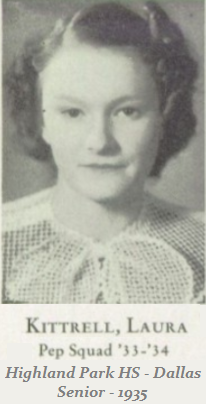 Laura Kittrell, 1918-2000 Laura Kittrell, 1918-2000Read more about Laura Kittrell and her interviews with "Lee Harvey Oswald" here: “Laura Kittrell — Oswald's Unemployment Counselor, Part One” Fourth Decade, Volume 8, No. 1
|
|
|
|
Post by Arjan Hut on Jun 10, 2020 12:24:50 GMT -5
359 Bullet path through JFK's neckRelated:40 The original autopsy notes by Commander James J. Humes41 The first draft of the autopsy rapport by commander James J. Humes42 Second version of the autopsy report predating the one in the National Archives43 Dr. Pierre Finck's handwritten notes taken during the JFK autopsyWith respect to this back wound the official autopsy report notes that "the missile path through the fascia and musculature cannot be easily probed" (16H981). The evidence adduced above indicates that this admission is something less than the truth— that in fact the wound could not be probed at all! Various explanations have been offered to account for the failure of the doctors' probing efforts. The Report itself suggests that "the bullet had passed between two large strap muscles and bruised them without leaving any channel, since the bullet merely passed between them" (R88). Jacob Cohen, speaking in defense of the Report, has advanced a more ingenious explanation. Since (argues Cohen) the Zapruder film shows Kennedy waving when he was hit, and since he was examined in a relaxed, supine position, it is quite possible that the relaxation of the shoulder muscles closed off the missile channel.  "I am a recognized "expert" on the Kennedy Assassination, and allegations of conspiracy which arise in "I am a recognized "expert" on the Kennedy Assassination, and allegations of conspiracy which arise in
consideration of the Alger Case, The Rosenberg Case, The Sacco and Vanzetti case.", says Cohen
on his Brandeis page. He wrote essays such as Honest Verdict: In Defense of the Warren Commission
(1969) and Will We Never Be Free of the Kennedy Assassination? (2013).However, neither the official explanation nor the Cohen addendum accounts for the essential fact that emerged during the autopsy: that a missile channel was discovered in the back, that it penetrated 1 to 2 inches, and that "the end of the opening could be felt with the finger." Cohen's relaxation hypothesis cannot explain why the muscles immediately under the skin to a depth of 1 to 2 inches did not relax, while deeper muscles did. Nor does the relaxation hypothesis make sense on other grounds. Dr. Milton Helpern has indicated that "it is a sine qua non of forensic pathology that if a bullet passes through a body, it must leave a discernible path." The idea that a relaxation of muscles would hide such a path is preposterous: this, at least, is the judgment of Dr. Cyril Wecht, who told me that the Cohen hypothesis is "medical nonsense."" Equally nonsensical is the idea that a bullet would make a channel for 1 to 2 inches and then "pass between two large strap muscles . . . without leaving any channel." In discussing this case Dr. Helpern remarked, "There is no such thing as a rifle bullet's passing through a neck without leaving a path." He estimated that a 6.5-millimeter bullet would leave a track 1 /4 inch in diameter. The evidence cited above indicates that no such track was ever found. (Thompson, Six Seconds in Dallas, p. 46/7)
|
|
|
|
Post by Arjan Hut on Jun 14, 2020 10:24:35 GMT -5
360 Arlen Specter's stretcher-bullet evidence
Related:18 The 0.30 caliber bullet that turned into CE399
124 Written record of the 18 September 1964 Warren Commission meeting359 Bullet path through JFK's neckFinally, if the President and the Governor were hit by the same bullet, then that bullet must be CE 399, and that bullet must have been found on Governor Connally's stretcher. In trying to establish this sequence of fact, Assistant Counsel Specter revealed the character of the whole investigation. Consider the following stages in his examination of CE 399. On March 16 the Commission heard the testimony of the chief autopsy surgeon, Commander Humes. At one point in the examination of Commander Humes, Allen Dulles interrupted Specter to indicate that he was "confused" by the line of questioning, since he had thought CE 399 had been found on the President's (not the Governor's) stretcher. Specter replied: There has been other evidence, Mr. Dulles.
If I may say at this point, we shall produce
later, subject to sequential proof, evidence
that the stretcher on which this bullet was
found was the stretcher of Governor Connally (2H368). Just what "evidence" Specter was referring to must remain more than a little mysterious.* For as Edward Epstein has pointed out, he made this claim four days before going to Dallas to interview the man who found the bullet, Darrell Tomlinson. 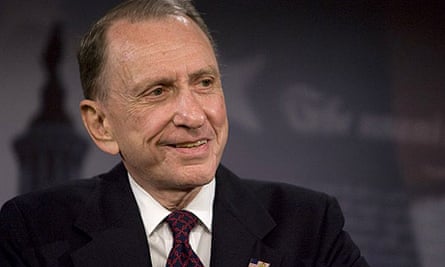 Reality stretcher Arlen Specter (1930-2012) Reality stretcher Arlen Specter (1930-2012)
*He may be referring to Secret Service or FBI reports on interviews at Parkland Hospital. In their depositions Parkland Hospital personnel mentioned a total of about thirty interviews by Secret Service or FBI agents (6H1-152). If reports on such interviews exist, they are not among those documents available for study in the National Archives. If they exist and are classified "Secret," this in itself would be an intriguing development. (Josiah Thompson, Six seconds in Dallas, p. 204)
|
|
|
|
Post by Arjan Hut on Jun 16, 2020 8:43:43 GMT -5
361 Navy officer Steel's reports on Lee Harvey Oswald
Compare:
84 The after-action reports of Army Intelligence officer Edward J. Coyle 103 Many of Gordon McLendon's records 190 Defense department report on Oswald/Atsugi investigation "Dear Paul,
Perhaps you are aware that ONI has quite a file on Oswald"
[Dallas Detective Paul] Bentley was a close personal friend of the Navy officer Lt. Com. Robert Steel who officially investigated Oswald after his defection and after the assassination and wrote reports that are now missing. ( William Kelly, Dispensing With Oswald the Patsy – Updated)  New York Times, 1959 New York Times, 1959
Q: It’s an historical fact that Jack Ruby shot Oswald on the 24th of November, 1963 and the letter you sent Bentley was dated the same day, so I am wondering if you sent it before or after Ruby shot Oswald? RDS: I’m sure it was after. Q: How did you know that ONI had quote “quite a file on Oswald” at that time? RDS: (Long pause) I don’t know. Q: Did you see it? RDS: Did I see it? Q: Did you see the ONI file on Oswald? RDS: I may have written the God damn thing. Q: Okay. Was A.C. Sullivan of Dallas a friend of yours. RDS: A very close friend. Q: How did you come to know him? RDS: He was in the same business I was in. He had been a guest at my home. I had been a guest at his home. Q: Now was he the head of the Dallas ONI office? RDS: Yes he was. Q: Did Sullivan know about the ONI file on Oswald? RDS: Of course. Q: Did A.C. Sullivan already have the file on Nov. 24, 1963 RDS: Undoubtedly. Q: Did you ever speak with Sullivan about Oswald’s ONI file? RDS: Yes. ( Thomas Graves, Interview with ONI Investigator Robert Steel, 2013) Everyone who is old enough can remember where they were and what they were doing when they heard JFK had been shot, right? Except, of course, the retired ONI special agent, Robert David Steel, who told me he had "very probably" done the investigation of Oswald at El Toro when Oswald defected to Russia, who was a good friend of Oswald's arrester, Paul Bentley, and whom I interviewed on tape a few years ago (and which tape I am still waiting for Bill Kelly to return to me). Steel could remember how long his small WW II ship (USS Sea Scout) was (down to the half-foot), where he was when he heard that Pearl Harbor had been attacked (his hometown, Brownwood, Texas), but for the life of him couldn't remember where he was when he heard JFK had been shot. (Thomas Graves, Educationforum, 4/8/2015)  November 24, 1963 Detective Paul Bentley Dallas Police Department Dear Paul, Perhaps you are aware that ONI has quite a file on Oswald, which no doubt has been made available on the Washington level. If not, I am certain that this information can be obtained for you through our resident special agent in charge of the Dallas office, A. C. Sullivan, who is a wonderful agent, and whom I hope you know. As a personal friend, I congratulate you, wish you continued success, and pray that your guardian angel will remain close at hand and vigilant, always. Robert D. Steel Commander, USNR-R 7960 June Lake Drive, San Diego, California
|
|
|
|
Post by Arjan Hut on Jun 18, 2020 8:21:32 GMT -5
362 The diary of Roscoe White
See also:
14 The negatives of Backyard Photos 133A and 133C 45 A color transparency of the backyard photographs 318 “Knoll shooter” crime scene photographs & possible physical evidence321 The identity of the parking lot police officer 329 Who was the Secret Service agent in the parking lot? In the four and a half years since he had read his father’s amazing confession in an old journal he had found in a footlocker, Ricky White had become familiar with the details of the assassination.  Ricky and his wife Tricia, 1990 Ricky and his wife Tricia, 1990
Roscoe White’s journal is no longer available for our inspection—Ricky says the FBI took it—but let’s accept it on faith for the moment. The journal was an interesting mix of the familiar, the convenient, and the ludicrous: It must have read like a C-grade movie script, and yet it was a scenario that nearly every critic of the Warren Commission wanted to believe. As Ricky recalls the entry for November 22, 1963, started like this: “I was Mandarin, the man behind the stockade fence who fired two shots. Lebanon was the man in the Book Depository who fired two shots. Saul was the man in the Records Building who fired two shots.” 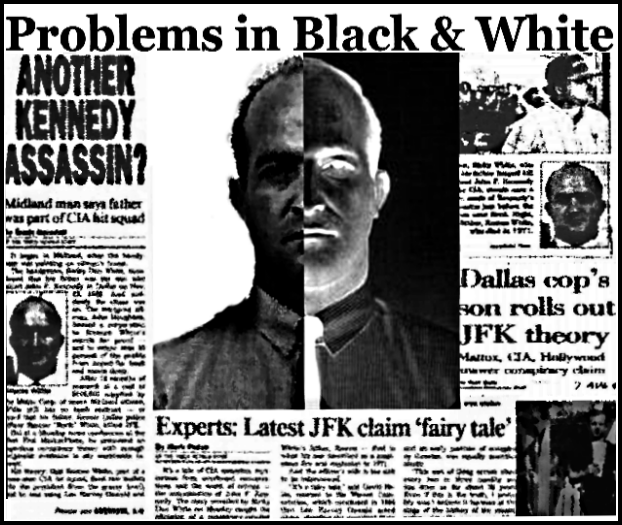 Ricky and other members of the family discovered the footlocker in 1982, on the day of Geneva’s father’s funeral. It contained not only the journal but also Roscoe White’s service record and other memorabilia, including an unmarked safe-deposit-box key and what appeared to be a receipt for $100,000 in negotiable bonds. Ricky took the contents of the footlocker to his home in Midland and puzzled over them for months. He studied photographs from his father’s military days and read bits and pieces from the journal, trying to grasp a father who had died before Ricky had a chance to know him.  Geneva White had once been a dancer in Jack Ruby's club. Geneva White had once been a dancer in Jack Ruby's club.
She passed away in 1991, aged 49.For reasons that Ricky is still at a loss to explain, almost four years passed before he got around to reading Roscoe White’s journal entry for November 22, 1963. Stunned by what he had read, Ricky drove to his mother’s house in Odessa and showed Geneva the passage dealing with the assassination. “She read for a few minutes and started crying,” Ricky said. “Then she told me it was all true.” (…) In January 1988 two FBI agents hauled Ricky and the contents of the footlocker to their office in downtown Midland and questioned him for five hours, copying some of the material and making an impression of the safe-deposit-box key. All of his belongings were returned, but later that same day one of the agents came again to Ricky’s house, supposedly to retrieve a notebook he had accidentally placed with the other material. A couple of days later, Ricky and Tricia discovered the journal was missing. Agents of the FBI categorically deny that they saw—much less that they stole—Roscoe White’s journal. (excerpts from Gary Cartwright, I was Mandarin, Texas Monthly, December 1990)  In 1976, when the Senate Intelligence Committee was probing the In 1976, when the Senate Intelligence Committee was probing the
role of the intelligence agencies in investigating the assassination, it
found a previously unknown pose in the same series of [Oswald
backyard] pictures. This was in the possession of a Dallas police
man's widow, the former Mrs. Roscoe White. She said her husband
told her it would be very valuable one day. [As the HSCA later wrote],
policeman White had "acquired" the picture in the course of his duties
after the assassination. A fellow officer has mentioned having made
"numerous" copies of the Oswald pictures for his colleagues ... Why
was there no copy of [this print] in the evidence assembled for [the
WC]?
(Summers, Not in your lifetime, 2013 edition)
|
|
|
|
Post by Arjan Hut on Jun 20, 2020 12:26:58 GMT -5
363 Oswald - Thornley correspondence “before being torn up, the paper had been watered down
so the ink was blurred, making it unreadable.”And what was Kerry Thornley doing in the hours immediately following JFK’s murder? He was beside himself with joy. He could not contain himself; he was cheering. He actually referred to Kennedy’s assassination as “good news”. (Mellen, p. 272; Gorightly, p. 53) Within 36 hours, he was being interviewed by the Secret Service, twenty-four hours later, by the FBI. (Gorightly, p. 54) 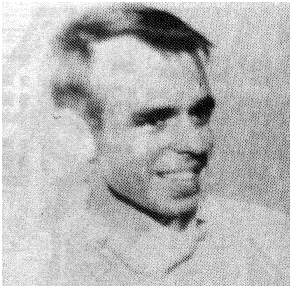 Kerry Thornley, 1938-1998 Kerry Thornley, 1938-1998Within days of the assassination, Thornley had departed from New Orleans. He left so hastily that he did not even talk to his landlord—even though he had over a week left on his rental. After finding a note, the landlord checked Thornley’s apartment. He found papers torn up all over the floor; but “before being torn up, the paper had been watered down so the ink was blurred, making it unreadable.” (Garrison, p. 76) Thornley had hightailed it to Arlington, Virginia. It was almost like he was preparing to be called by the Warren Commission, which he was. He later joked about it. He said there was just cause for the FBI and Secret Service to suspect he had a role in the assassination. But then, for whatever reason, that line of inquiry was quickly dropped. But being where he was, in proximity to Arlington Cemetery, this gave him the opportunity to urinate on Kennedy’s grave. (Garrison, p. 78) (...)  JFK's gravesite JFK's gravesiteThornley made the point that he never saw Oswald after he left El Toro. (WC assistent counsel Albert) Jenner then specifically asks about seeing the alleged assassin in New Orleans. Thornley denied it. (WC, Vol. 11, p. 109) He only knew about Oswald’s defection through a published report, probably the military journal Stars and Stripes. He also knew of his return to America, but never talked to him about the book. He says he began the book when he learned of the defection and finished it in February of 1962; Oswald returned in June. He reaffirmed to Jenner there was no contact with Oswald at all after El Toro. (WC Vol. 11, p. 110) His father contradicted Kerry. According to an 11/26/63 confidential LA Sheriff’s report, his father Ken said that Oswald had been in letter contact with Thornley. Some of these were of recent vintage. (Mellen, p. 276) Could these possibly be the letters Thornley had ripped up and then watered down in his apartment? Allen Campbell, who worked out of Banister’s office, told Joan Mellen in 2002 that the two had been in contact. (Ibid) That’s just for starters; we will return to the rather important issue of Thornley’s denials on this point later. ( James DiEugenio, Kerry Thornley: A New Look, Part 1)
|
|
|
|
Post by Arjan Hut on Jun 22, 2020 10:13:44 GMT -5
364 The Kinsley Slug
"It didn't go in the body ...
It fell off the ambulance still in this button."Compare:
64 Nearly whole bullet removed from JFK's body 69 Bullet found in JFK's limousine 105 a Four bullet fragments
b Dennis David memorandum describing four bullet fragments As Owens, Hill, and Alexander proceed to the Tippit murder scene, they see an ambu- lance, sirens wailing, cross in front of them, a police car close behind. The officers know it's heading for the emergency unit at Methodist Hospital. The ambulance bearing Tip pit's body had picked up a patrol car, driven by Officer Robert Davenport and partner W. R. Bardin, a block earlier. In a moment the two are wheeling into the emergency entrance. When Butler and [Eddie] Kinsley open the back of the ambulance, Officer Davenport is shocked to see J.D. Tippit, whom he knew well and had worked with for three years. Davenport and Bardin help get Tippit into the emergency room. Though he appears to be dead, the officers observe "the doctors and nurses trying to bring [Tippit] back to life." (Bugliosi, Reclaiming Parkland, p.134)  In recent years, Kinsley told newsman Earl Golz of an extraneous bullet. According to Kinsley, as he unloaded Tippit from his ambulance: "I kicked one of the bullets out of my ambulance that went into his button . . . onto the parking lot of Methodist Hospital. It didn't go in the body ... It fell off the ambulance still in this button." (Marrs, Crossfire, p. 344)
|
|
|
|
Post by Arjan Hut on Jun 24, 2020 13:13:19 GMT -5
365 Who owned the jacket discarded by Officer J. D. Tippit's assailant?
Related:166 The identity of the officer who found the Westbrook jacketA few minutes before Oswald was arrested at the Texas Theater, the following query came over the Dallas Police radio net: The jacket the suspect was wearing over here on Jefferson bears a laundry tag with the letter B 9738. See if there is any way you can check this laundry tag (17H471). Only moments before, a young man observed running away from the Tippit shooting was seen to drop a light-colored jacket in a parking lot just off Jefferson Boulevard. If the jacket could be traced to Oswald, it would tend to prove that he was guilty of at least one murder that day. Oddly enough, in spite of exhaustive efforts by the FBI, the jacket could never be traced to Oswald. The FBI's investigation, on the contrary, tended to establish the likelihood that the jacket never belonged to Oswald. 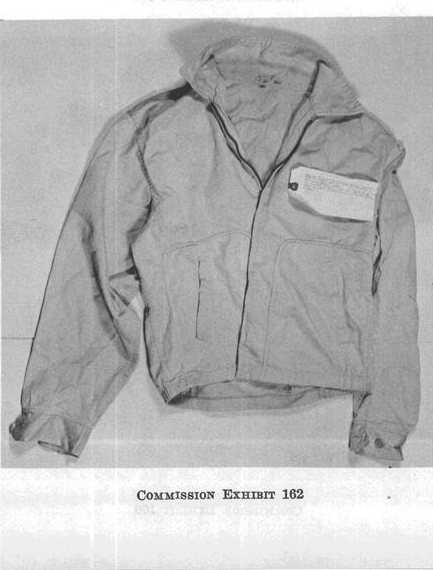 By April 21, 1964, a canvass of all laundry and dry-cleaning establishments in the Dallas-Ft. Worth area had failed to turn up the identity of laundry mark "30 030," also found in the jacket, and drycleaning tag "B 9738" (Archives, CD 868). In all, 424 firms were contacted, with negative results (Archives, CD 1066, I). The search was extended to the greater New Orleans area; a canvass of 293 laundry and dry-cleaning establishments failed to turn up the identity of the tag and/or mark in question (Archives, CD 993, 1245). Faced with failure in what should have been a simple task, the FBI went back to Marina Oswald: On April 1, 1964, Marina Oswald advised that to the best of her recollection Lee Harvey Oswald had
only two jackets, one a heavy jacket, blue in color, and another light jacket, gray in color. She stated she
believed Oswald possessed both of these jackets in Russia and had purchased them
in the United States prior to his departure for Russia. She stated she could not recall
that Oswald ever sent either of these jackets to any laundry or cleaner anywhere. She said
she could recall washing them herself. She advised that to her knowledge Oswald possessed both of these
jackets at Dallas on November 22, 1963.
None of the other items of Oswald's clothing available contained any dry cleaner's or
laundry markings that were similar or could be associated with the "30 030" marking
and the "B 9738" dry cleaner tag appearing on the K-42 (CE 162) jacket (Archives, CD 868). The last paragraph of the above memorandum is not strictly accurate. An earlier FBI examination of Oswald's clothing turned up no laundry or drycleaning marks of any kind (Archives, CD 205), let alone "similar" ones. Five of his shirts, the report went on, "appear to have been laundered by hand" (Archives, CD 205). From the FBI investigation it would appear that CE 162, the gray jacket discarded by Tippit's assailant, may not have belonged to Oswald. Where Oswald's shirts carried the size "small," this jacket was marked "medium" (Archives CD 7, 205). (Josiah Thompson, Six Seconds in Dallas, p. 162)
|
|
|
|
Post by Arjan Hut on Jun 25, 2020 7:47:48 GMT -5
366 Marguerite Oswald's 1956-1962 IRS returnsCompare:141 Lee Harvey Oswald's 1959, 3rd quarter, U.S. Marine Corps earnings142 Oswald's 1957 returnOne of my main conflicts with the Oswald doppelgänger theory as I stated earlier in their piece, is what happens to the other Oswald after the assassination. Even John Armstrong who wrote the definitive book on the Oswald being a doppelgänger in, Harvey and Lee, doesn’t deal with these troubling issues. Armstrong has nothing to say in regards to what happens to the other “Marguerite” afterward either, other than she disappears from the scene. She was reportedly spoken to by long-term friends who spotted her working in department stores in New Orleans. But by 1956, under the official history she has left never to return. If this is a CIA run operation it seems inconceivable that they would hire such a batty woman as Marguerite Oswald to be an operative. On the other hand, her IRS returns are sealed from 1956-1962. Marked “referred...postponed in full...” for reasons only the government knows we are not allowed to see these records. Why? Opening those files to public access might explain a lot–or else create more mysteries. Is this a cover for an operation? Ironic that while this is concealed from the public, we are allowed to see Jack Ruby’s mother’s dental records. (...)  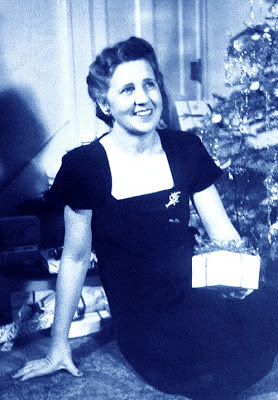 Left: Margret Oswald-Keating, right Marguerite Oswald (or is it Margret?)There Is a Second Margret–The First Wife Left: Margret Oswald-Keating, right Marguerite Oswald (or is it Margret?)There Is a Second Margret–The First WifeRobert Oswald’s first wife was Margret Keating (1892-1972). They were married 13 years and divorced in 1933. Keating never remarried and lived in the same house she shared earlier with Robert Oswald for many years. One peculiar thing was the 1956 telephone directory in New Orleans lists her as Margret Oswald, at the correct street address. This is a name she had not used in 23 years, since the court awarded her maiden name back to her in the 1933 divorce. Notice the year as well–1956. The same year Marguerite’s tax returns are withheld. It could have been a typo but certainly an odd occurrence. I’ll leave this one out there for the reader to ponder... ( George W. Bailey, Who was Marguerite Oswald?, 2013)
|
|























